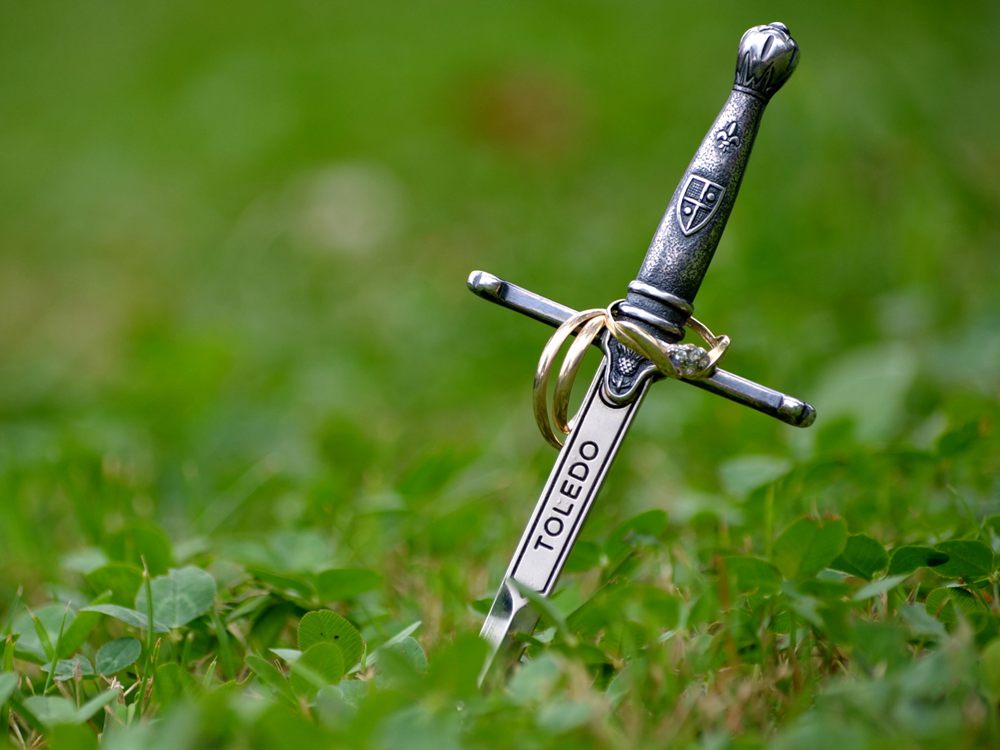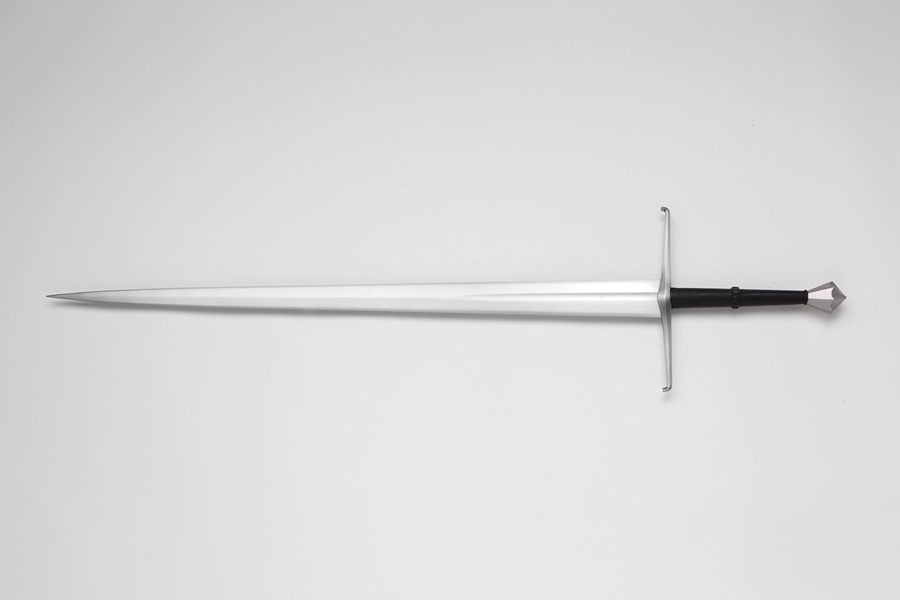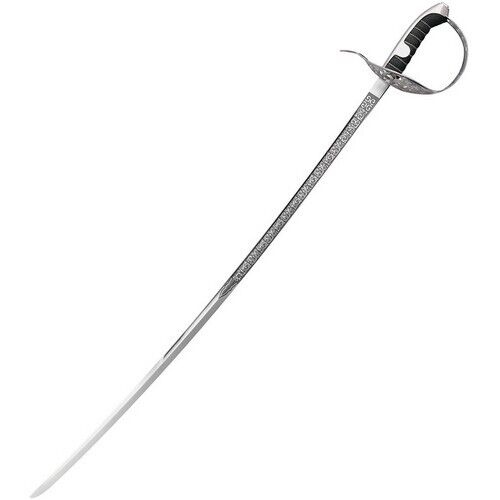Navigating the world of antique swords can be a fascinating and rewarding journey. As you delve into this realm, you’ll uncover the rich history behind these exquisite pieces of craftsmanship and art. The key to fully appreciating and valuing antique swords lies in their proper identification, which sheds light on the story, origin, and worth of these cherished artifacts.
In this guide, you’ll learn essential factors to consider when identifying and valuing antique swords, such as discovering the sword’s unique characteristics, researching the maker’s mark or hallmark, and seeking expert advice. By understanding these crucial elements, you’ll be well-equipped to assess the rarity and value of your antique swords, enhancing your collection or investment.
Armed with this knowledge, you can confidently explore the fascinating realm of antique swords and uncover the remarkable history, artistry, and value behind each piece. Remember, the more you know about these captivating objects, the greater your appreciation for their lasting significance in history and culture.
Table of Contents
The History & Evolution of Antique Swords
When exploring the history of antique swords, you’ll find that they have evolved significantly over time. Here’s a brief overview of their evolution:
In the early Bronze Age (circa 3000 BCE), swords were primarily short and made from bronze. These blades were often used for slashing rather than thrusting due to their blunt edges. However, improvements in metallurgy led to the development of stronger, longer swords that could be used for both slashing and stabbing.
During the Iron Age (circa 1200 – 600 BCE), iron replaced bronze as the primary metal for crafting swords. This meant that the swords were stronger, more durable, and could maintain a sharper edge.
As time progressed, multiple types of swords emerged. Some notable examples include:
- Xiphos: A short, double-edged sword used by the ancient Greeks.
- Gladius: A Roman sword that was shorter, stab-oriented, and known for its geometric point.
- Spatha: A longer Roman sword that became popular in the 3rd century CE, often used for slashing.
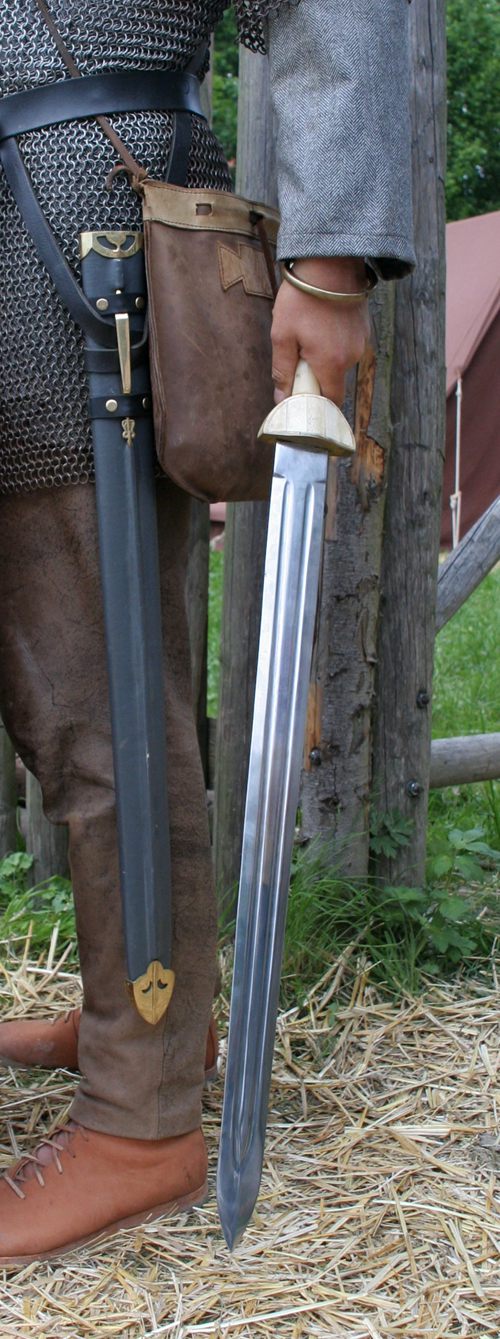
These various types of swords were adapted and influenced by the cultures and regions that designed them. In the Middle Ages, European swords underwent more innovations, such as the development of cross guards to protect the user’s hand, and the increased use of pommels to improve the balance and function of the weapon. Some well-known medieval swords are:
- Arming Sword: A single-handed, double-edged sword with a cruciform hilt and straight blade.

- Longsword: A two-handed sword with a longer blade than the arming sword, used for slashing and thrusting.
- Falchion: A one-handed, single-edged sword with a curved blade resembling a machete.
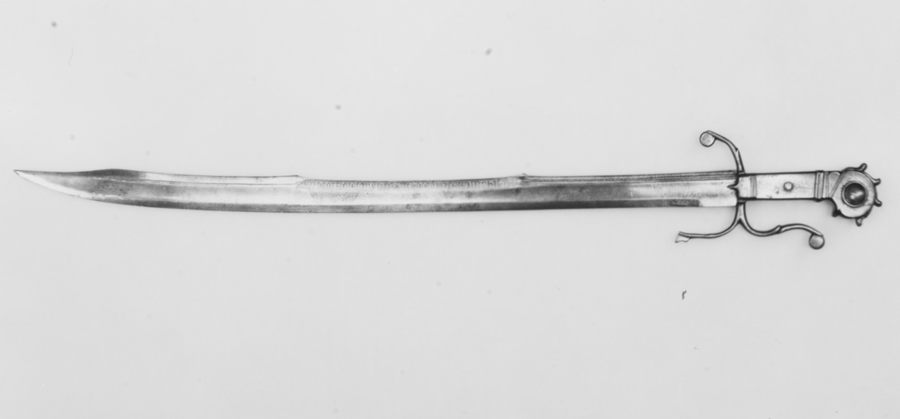
In the later Middle Ages and the Renaissance, more specialized swords were developed to meet the changing demands of warfare and personal combat. These include the rapier, a slender, sharp-pointed sword designed primarily for thrusting, and the saber, a single-edged sword with a curved blade, often wielded by cavalry.
Understanding the evolution of antique swords will help you identify and appreciate the value of these fascinating and historic items. As you continue your research, you’ll undoubtedly come across even more unique sword types and become more knowledgeable of their various designs and purposes.
How to tell if your sword is Antique or old
When trying to determine if your sword is antique or old, there are several factors you can consider to help with identification.
First, examine the blade’s color and condition. An older, vintage sword is likely to have a blackened neck, while a newer, acid-etched sword might have a white appearance. If the sword is rusty and without any discernible color, this could also suggest age.
Next, look for any markings, hallmarks, or signatures on the sword as these can provide valuable information about its origin and age. For example:
- Manufacturer markings may indicate the company that made the sword and potentially help you date the piece.
- Smith’s marks or signatures can be found on certain swords, particularly Japanese ones, and may indicate the swordsmith who crafted the blade.
You should also pay attention to the sword’s design and style, as this can give you clues about its age and origin. Keep in mind that these patterns and styles may have changed over time, and different regions or cultures may have distinct features.
Another useful resource for identifying your sword is the Old Swords website, which offers a vast database of over 50,000 images of more than 6,500 swords. This can help you match your sword to specific examples and potentially determine its age and value.
Remember, identifying and valuing antique swords takes practice and a keen eye for detail. Keep researching and learning about this fascinating area of interest, and over time, you’ll become more adept at distinguishing between antique or old swords and contemporary replicas.
5 Types of Antique Swords and Their Values
Dueling Swords
Dueling swords, such as rapiers and smallswords, were popular for one-on-one combat and self-defense. Rapiers were slender, sharp-pointed single-edged swords designed for thrusting. Smallswords were lighter, shorter, and featured a double-edged blade.
- Rapier value: $800 – $2,500
- Smallswords value: $750 – $1,500
Ceremonial Swords
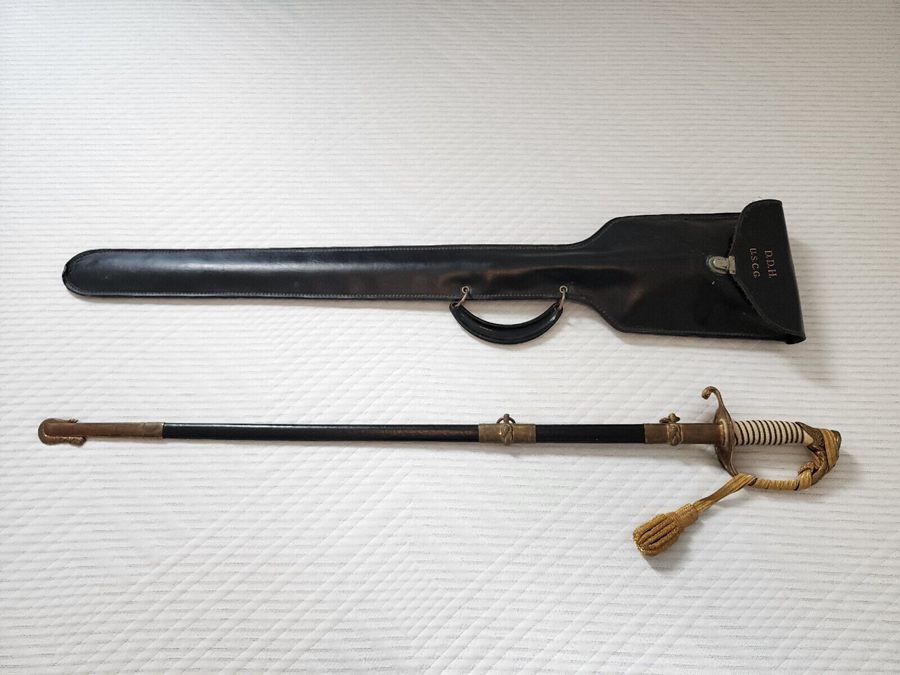
Ceremonial swords were often ornate and embellished, and used for events like military parades or social functions. Examples of ceremonial swords include dress swords, presentation swords, and court swords.
- Dress swords value: $500 – $2,000
- Presentation swords value: $1,000 – $5,000
- Court swords value: $400 – $1,500
Religious Swords
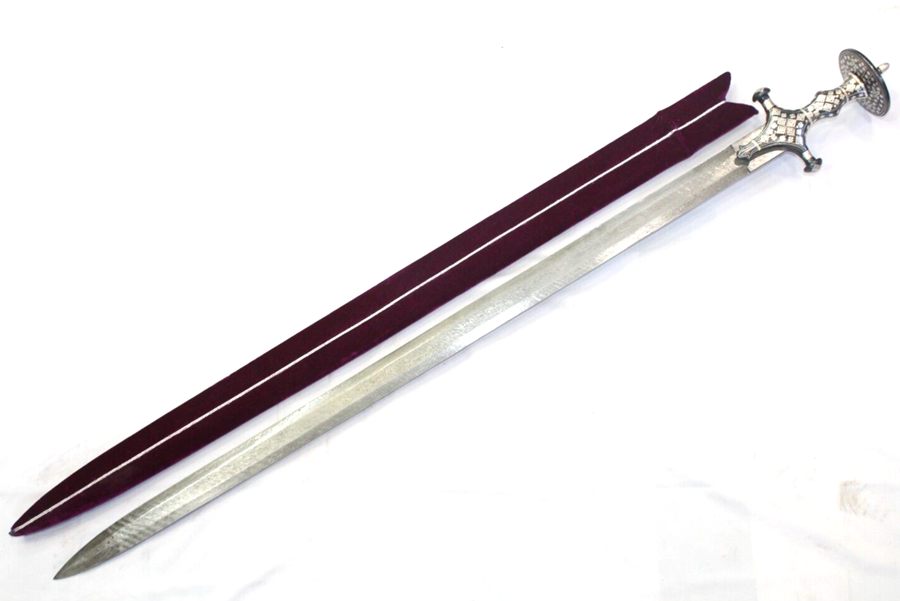
Religious swords were used in historical religious contexts such as Crusades or even for rituals by specific cultures such as the Japanese Katana. Some religious swords were functional, while others were purely symbolic.
- Crusader sword value: $1,000 – $3,000
- Japanese Katanas value: $2,000 – $20,000+
Battle Swords

Battle swords were designed for warfare and were characterized by their sturdy construction and cutting power. Some examples are broadswords, cavalry sabers, and Persian shamshirs.
- Broadsword value: $1,000 – $4,000
- Cavalry saber value: $200 – $1,000
- Persian shamshir value: $500 – $3,000
Court Swords

Court swords were used as dress accessories by officers and nobles during social functions and formal wear events. They were often highly decorative with intricate hilt designs, making them collectible and valuable.
- Court swords value: $400 – $1,500
Remember to consider factors like age, condition, rarity, and origin when evaluating antique sword values. Consult professional appraisers or online sources to get an accurate valuation of your sword.
10 Factors to Identify & Value Antique Sword
1. Antique Sword’s Age
When identifying and valuing antique swords, the age of the sword plays a crucial role in determining its worth. A sword’s age can be determined by examining factors such as markings by the manufacturers, the style, and design of the sword. Let’s look at a valuation table for the age of swords:
| Sword’s Age Period | Average Valuation |
|---|---|
| Dark Age and Vikings Era | $800 – $1,000 |
| Renaissance Era | $700 – $900 |
| Regional 1600s Swords | $1,500 – $2,000 |
| Medieval Swords | $600 – $800 |
| Sabers and Scimitars | $500 – $700 |
| Ottoman Empire Swords | $1,200 – $1,500 |
Knowing the age of your antique sword is crucial to understanding its value. For example, swords originating from the Dark Age and Vikings era have an average valuation of $800 to $1,000, while swords from the regional 1600s period can fetch up to $1,500 – $2,000 due to their rarity.
2. Old Sword Blade Materials
When considering the value of antique swords, the materials used in their construction play a significant role. Different regions used various types of steel for their swords, which directly affects their value. Here are some notable old sword blade materials that you should be aware of when trying to identify and value antique swords:
- Tamahagane: This material was commonly used in Japanese samurai swords. It was produced from the tatara smelter using satetsu or iron ore in sand form.
- Wootz steel: This type of steel was used in Indian and Middle Eastern swords. It is characterized by a distinctive pattern on the blade, known as a “watered” or “damascene” pattern.
- Regional European steel: European swords, such as rapiers and broadswords, were typically made from regional steel produced through various methods, such as crucible steel or bloomery steel.
To give you an idea of how blade materials can affect the value of antique swords, let’s look at a valuation table for these materials:
| Blade Material | Average Valuation |
|---|---|
| Tamahagane (Japanese) | $2,000 – $5,000+ |
| Wootz steel (Indian) | $1,000 – $3,500+ |
| Regional European steel | $500 – $2,500+ |
Keep in mind that these are only average prices, and the specific value of a sword will depend on various factors such as age, condition, and provenance. It’s essential to consult with experts or do thorough research on specific swords to determine their individual worth accurately.
In conclusion, when identifying and valuing antique swords, pay special attention to the blade’s material and construction. These factors will help you determine the sword’s origin and provide insight into its potential value.
3. Sword’s Handle Materials
When assessing antique swords, one of the factors that can significantly impact their worth is the materials used in the sword handles. Different materials were used in various periods and regions, and knowing their differences can help you in determining the value of your antique sword.
Ivory Handles
Ivory is a premium material that was used in handles of high-quality antique swords. Swords with ivory handles are usually more valuable than those with common materials. The value may vary depending on the craftsmanship of the carving and the condition of the ivory.
| Ivory Handle Type | Average Valuation |
|---|---|
| Plain, No Carvings | $800 – $1,000 |
| Simple Carvings | $1,200 – $1,500 |
| Intricate Carvings | $1,800 – $2,500 |
Wood Handles
Wood is a common material for antique sword handles, often used in combination with other materials, like metal or leather. The value of wood-handled swords will depend on factors such as the rarity of the wood used, carving quality, and overall condition.
| Wood Handle Type | Average Valuation |
|---|---|
| Common Wood, No Carvings | $100 – $150 |
| Rare Wood, No Carvings | $250 – $300 |
| Carved Wooden Handle | $350 – $500 |
Metal Handles
Many antique swords have handles made from a variety of metals like brass, bronze, iron, or even silver and gold. The value of a sword with a metal handle depends on the metal used, the design, and the condition.
| Metal Handle Type | Average Valuation |
|---|---|
| Brass or Bronze, Simple | $200 – $300 |
| Brass or Bronze, Ornate | $400 – $600 |
| Silver, Simple | $800 – $1,200 |
| Silver, Ornate | $1,500 – $2,500 |
| Gold, Simple | $5,000 – $7,000 |
| Gold, Ornate | $10,000 – $15,000 |
4. Length and Size
When assessing the value of antique swords, one of the key factors you need to consider is the length and size of the sword. Different types of swords have varying lengths and sizes, which can greatly influence their overall value. In general, longer and larger swords typically command higher prices due to their rarity and historical significance. Below is a table showcasing the average valuations of several types of antique swords based on their length and size:
| Antique Sword Type | Average Valuation |
|---|---|
| Rapier (Long, slim, sharp-pointed) | $1,500 – $3,000 |
| Claymore (4 – 4.5 feet long) | $8,000 – $12,000 |
| Katana (24 – 28 inches long) | $5,000 – $10,000 |
| Cutlass (20 – 24 inches long) | $600 – $1,200 |
| 1832 Foot Artillery Sword | $400 – $800 |
| Longsword (44 – 50 inches long) | $10,000 – $15,000 |
As you analyze the various types of antique swords and their lengths, keep in mind that rarity and historical context also play a significant role in determining their value. For instance, a well-preserved rapier with intricate detailing may fetch a higher price than a simpler, more common design.
It is crucial to know the general length and size ranges for specific sword types to help you identify and properly value your antique swords. Familiarizing yourself with these details not only allows you to accurately determine their worth but also enables you to spot potential forgeries or altered items.
5. Function and Use
When assessing the value of antique swords, it’s important to consider their original function and use. Swords were designed for different purposes, such as military use or civilian use, which can impact their value. Additionally, the shape, size, and construction of the sword can provide clues to its origin and intended use.
Swords that were used by military personnel, such as cavalry sabers or infantry officer’s swords, may be more valuable than those designed for civilian use. The reason behind this is that military swords often have a history and documentation, making them more desirable to collectors. Civilian swords, such as rapiers or smallswords, may also be valuable, but their values might be more influenced by factors such as age, condition, and rarity.
To help better understand the factors that affect the value of antique swords, below is a table that provides average valuations based on the sword’s function and use:
| Antique Sword Type | Average Valuation |
|---|---|
| Military – Cavalry Saber | $700 – 800 |
| Military – Infantry Officer’s Sword | $600 – 700 |
| Civilian – Rapier | $500 – 600 |
| Civilian – Smallsword | $400 – 500 |
It’s essential to keep in mind that these average valuations are just a starting point. Further research, including consulting with professional appraisers, can provide a more accurate valuation for specific swords. Additionally, swords that are more rare or have unique features may fetch higher prices than those listed.
6. Markings and Inscriptions
When you are identifying and evaluating antique swords, it’s crucial to pay attention to markings and inscriptions that can significantly affect the value of the sword. These markings can provide you with information about the manufacturer, origin, date, and rarity of the sword. To help you understand the impact of markings and inscriptions on antique sword values, the tables below provide average valuations for different inscriptions.
Manufacturer Markings
| Manufacturer Marking | Average Valuation |
|---|---|
| A well-known brand’s etched carvings/signs | $900 – 1,200 |
| Local maker’s marks | $600 – 800 |
| Unmarked, but with identifiable features | $500 – 700 |
| No visible markings | $400 – 500 |
Style and Design Features
| Style/Design | Average Valuation |
|---|---|
| Renaissance period | $1,000 – 1,200 |
| Baroque period | $800 – 1,000 |
| Napoleonic era | $750 – 850 |
| American Civil War | $600 – 750 |
Origin and Date
| Origin and Date | Average Valuation |
|---|---|
| Asian (Ancient) | $2,000 – 2,500 |
| European (Medieval) | $1,500 – 2,000 |
| European (Renaissance) | $1,000 – 1,200 |
| European (Baroque) | $800 – 1,000 |
7. Condition
When evaluating the value of antique swords, several factors come into play. In this section, we will discuss the key conditions that can impact the worth of these collectibles.
Blade Condition
The blade’s condition is one of the most crucial factors that determine the value of an antique sword. A well-preserved blade that retains its original shape, sharpness, and finish will command a higher price. Notable damages, such as nicks, cracks, or rust, can have a significant impact on the value.
| Blade Condition | Average Valuation |
|---|---|
| Mint, no scratches, rust, or damage | $600 – 800 |
| Minor wear, superficial scratches | $450 – 550 |
| Moderate wear, small nicks, light rust | $300 – 350 |
| Significant damage or rust, needs restoration | $100 – 150 |
Handle Condition
The handle’s condition can also affect the value of an antique sword. A handle with its original grip, design, and materials can add significant value. Conversely, a sword with a damaged or replaced handle may be less desirable to collectors.
| Handle Condition | Average Valuation |
|---|---|
| Original, undamaged, no wear | $500 – 700 |
| Minor wear, small chips or scratches | $350 – 450 |
| Moderate wear, cracks, replaced parts | $200 – 250 |
| Significant wear or damage, needs restoration | $50 – 100 |
Valuing Your Antique Sword
When considering the value of your antique sword, several factors come into play, such as the age, condition, rarity, and historical significance. It’s also critical to determine the sword’s authenticity. In this section, we will discuss different methods you can utilize to value your antique sword, covering appraisal services, auctions, and sales.
Appraisal Services
Consulting a professional appraiser is a reliable way to estimate the value of your antique sword. These experts will assess your sword’s condition, markings, and historical context to provide an accurate valuation. Additionally, appraisers may offer guidance on sword maintenance and storage to preserve its value. Some reputable appraisers include:
- Ewart Oakeshott: A respected sword historian and author specializing in medieval European swords.
- Regional or national sword clubs and associations often have a list of recommended appraisers.
- Local antique dealers with expertise in antique swords and weaponry can also provide a valuation.
Auctions
Auctions serve as another platform for valuing antique swords. Following auctions with similar items to your sword will give you an idea of the market value. Furthermore, you may consider consigning your sword to reputable auction houses that specialize in antique swords and militaria, such as:
- Hermann Historica: A prominent auction house specializing in militaria, including antique swords.
- Bonhams: Another well-known auction house with a department specializing in antique arms and armor.
- Czerny’s: An auction house focusing on antique weapons and historical artifacts.
Keep in mind that auction houses will charge a commission, usually based on a percentage of the sale price, which will impact your profit when selling your sword.
Sales
When looking to sell your antique sword, it’s crucial to understand the various sales channels available and how each impacts the final sales price. These channels may include:
- Private sales: Selling directly to collectors can result in a higher price, as there are no intermediary fees. However, finding a reputable buyer may be challenging.
- Dealers: Selling through a dealer offers a relatively quick sale, but the dealer may require a fee, often a percentage of the sale price.
- Online sales platforms: Websites like eBay or specialized online militaria stores provide wider audiences, but competition and authenticity concerns may affect the price.
Before selling your antique sword, research the market and keep an eye on comparable items’ prices. Your sword’s value may increase up to 20% every year, making it an excellent investment if it is genuine. Protect your antique sword’s increasing value by thoroughly documenting its history and preserving its condition.
Final Thoughts
As you explore the world of antique swords, keep in mind the importance of identifying and understanding the history behind each piece. There are various sword types that have originated from different regions and served various purposes over time. Knowing this information will help you appreciate the craftsmanship and cultural significance of the swords in your collection.
When identifying antique swords, some sword types may have distinguishing markings such as a signature or hallmarks, while Japanese, Chinese, or Islamic swords usually have in-depth motifs and batch numbers that can assist in pinpointing their origins. Remember that condition and preservation of these markings may impact the sword’s value.
Do not hesitate to consult resources like online databases and websites dedicated to sword identification, such as Old Swords and Sword Encyclopedia. By utilizing these resources, you will familiarize yourself with official patterns and physical characteristics that can help ease the identification process.
Expanding your knowledge base and staying well-informed will ensure that you can make confident decisions when it comes to both identifying and valuing antique swords for your collection. Happy collecting!
FAQ
Q. What are the factors to consider when identifying and valuing an antique sword?
A. When evaluating an antique sword, look for these important qualities:
- Metal and construction: The type and quality of steel used can differ depending on the region. In Japan, for example, samurai swords were made from tamahagane.
- Design and craftsmanship: Intricate carvings and engravings indicate higher value, as well as the skill of the artisan who made the sword.
- Age and rarity: Older swords are generally more valuable, as are those from a particular time period or produced in limited quantities.
- Provenance: Documentation of the sword’s history and ownership adds value and authenticity.
- Condition: A nicely preserved sword is more valuable than one with significant damage or wear.
Q. What are some common types of antique swords and their base values?
A. Here are some common types of antique swords:
- Broadsword
- Characteristics: Taller, thicker, and sharper double-edged blades
- Base Value: Varies based on its condition, age, and rarity
- Falchion
- Characteristics: Short, heavy single-edged blade; used by European knights during the 13th to 15th centuries
- Base Value: Varies based on its condition, age, and rarity
- Greatsword
- Characteristics: Large, thick, double-edged blade; used for cutting and thrusting
- Base Value: Varies based on its condition, age, and rarity
Q. How can I identify a sword?
A. To identify an antique sword, you can:
- Look for markings or engravings on the blade, hilt, or scabbard that may indicate the maker, region, or date.
- Identify the type of sword based on design features, such as blade shape, size, and handle design.
- Research to determine the sword’s age and origin.
- Consult online databases or sword collectors for further guidance.
Remember that identifying an antique sword can be complex and may require expert knowledge. Don’t hesitate to seek assistance from experts in the field as you work on your identification and valuation.

